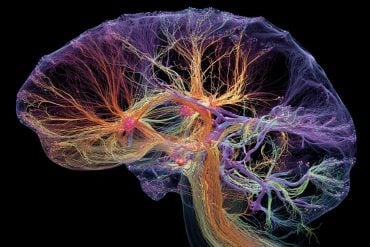Summary: An international study of 6,000 proteins across 56,000 people found that while protein levels differ significantly between males and females, most of these differences are not caused by genetics. Only about 100 proteins showed sex-specific genetic regulation, suggesting that environmental, hormonal, and lifestyle factors play a major role in shaping health outcomes.
These findings challenge the assumption that genetic differences alone explain sex-based health disparities. The study highlights the need for a broader approach to personalized medicine that includes both biological and social determinants of health.
Key Facts:
- Widespread Differences: Two-thirds of proteins differed in levels between sexes.
- Few Genetic Causes: Only ~100 proteins showed sex-specific genetic regulation.
- Beyond Genetics: Environment, lifestyle, and access to resources may drive health differences.
Source: Queen Mary University London
The results of an international study led by researchers from Queen Mary University of London’s Precision Healthcare University Research Institute (PHURI) shed new light the underlying biological mechanisms which cause differences in health risks, symptoms and outcomes between males and females.
The study, carried out in collaboration with the Berlin Institute of Health at Charité, Universitätsmedizin Berlin, and the Medical Research Council (MRC) Epidemiology Unit at the University of Cambridge, was published today in Nature Communications.
Using data from UK Biobank and the Fenland study, the team carried an in-depth analysis of the genetic links between ~6,000 proteins and hundreds of diseases in 56,000 males and females.
The team found that for two-thirds of these proteins, their levels differed between males and females. Further examination revealed that only a very small fraction, around 100 proteins out of the 6,000 studied, had differences in the genetic ‘switches’ which control their levels, when compared between males and females.
These findings, which may have implications for drug development, indicate that while there are differences between the sexes in relation to how much they express certain proteins, what’s causing these differences isn’t solely down to differences in their genetics.
Instead, the authors highlight the importance of looking beyond genetics – and other medical factors such as hormones – when comparing health risks and outcomes between males and females.
Their findings indicate that non-medical factors such as where people work and live, their education, financial situation, access to resources, as well as their lifestyle also contribute to the health differences experiences between the sexes and so should be explored further and considered more when exploring sex differences in health.
Mine Koprulu, lead author of the study and a postdoctoral researcher at Queen Mary’s PHURI, said: “For the first time in history, we are able to study human biology at this level of detail—across genes, proteins, and more. This is the largest study to date exploring the similarities and differences in how our genetic code regulates blood protein levels between sexes.
“Our findings highlight the need to better understand the factors that impact health differences — at the genetic level and beyond— to create more tailored and equitable healthcare for everyone.”
Professor Claudia Langenberg, Director of the PHURI at Queen Mary and Professor of Computational Medicine at the Berlin Institute of Health at Charité, Germany, said: “Drug development pipelines increasingly incorporate information on genetic differences in protein levels and function and this has led to large investment in human cohorts, such as UK Biobank.
“From this perspective, better understanding of population differences in the regulation of proteins, such as those between males and females, is essential to guide precision medicine approaches and identify where one size may not fit all.
“Our results clearly show that with very few exceptions, protein regulating genetic variants identified so far behave in a very similar way in males and females. This provides evidence for an important implicit assumption – that insights arising from studying these variants apply to both sexes.”
In this study, data was categorised as male or female based on chromosomal information (XX or XY). The authors acknowledge that chromosomal information does not always align with an individual’s gender identity.
However, for the purposes of this study (genetic and protein-level scientific analyses), this categorisation was necessary, and data on gender identity was not reliably recoded meaning it could not be consistently used across all data.
Funded by:
The Fenland Study (DOI 10.22025/2017.10.101.00001) is funded by the Medical Research Council (MC_UU_12015/1, Claudia Langenberg, Nicholas J. Wareham).
This work is supported by the Medical Research Council (MC_UU_00006/1 – Aetiology and Mechanisms) (Claudia Langenberg, Eleanor Wheeler, Maik Pietzner, Nicola D. Kerrison, and Nicholas J. Wareham).
Mine Koprulu is supported by Gates Cambridge Trust.
Harry Hemingway is supported by Health Data Research UK and the NIHR University College London Hospitals Biomedical Research Centre.
Spiros Denaxas is supported by a) the BHF Data Science Centre led by HDR UK (grant SP/19/3/34678), b) BigData@Heart Consortium, funded by the Innovative Medicines Initiative-2 Joint Undertaking under grant agreement 116074, c) the NIHR Biomedical Research Centre at University College London Hospital NHS Trust (UCLH BRC), d) a BHF Accelerator Award (AA/18/6/24223), e) the CVD-COVID-UK/COVID-IMPACT consortium and f) the Multimorbidity Mechanism and Therapeutic Research Collaborative (MMTRC, grant number MR/V033867/1).
Julia Carrasco-Zanini was supported by a 4-year Wellcome Trust PhD Studentship and the Cambridge Trust. We are grateful for all the participants from Fenland Study and UK Biobank cohort who have enabled this work.
About this genetics research news
Author: Honey Lucas
Source: Queen Mary University London
Contact: Honey Lucas – Queen Mary University London
Image: The image is credited to Neuroscience News
Original Research: Open access.
“Sex differences in the genetic regulation of the human plasma proteome” by Mine Koprulu et al. Nature Communications
Abstract
Sex differences in the genetic regulation of the human plasma proteome
Mechanisms underlying sex differences in the development and prognosis of many diseases remain largely elusive.
Here, we systematically investigated sex differences in the genetic regulation of plasma proteome (>5800 protein targets) across two cohorts (30,307 females; 26,058 males).
Plasma levels of two-thirds of protein targets differ significantly by sex. In contrast, genetic effects on protein targets are remarkably similar across sexes, with only 103 sex-differential protein quantitative loci (sd-pQTLs; for 2.9% and 0.3% of protein targets from antibody- and aptamer-based platforms, respectively).
A third of those show evidence of sexual discordance, i.e., effects observed in one sex only (n = 30) or opposite effect directions (n = 1 for CDH15).
Phenome-wide analyses of 365 outcomes in UK Biobank did not provide evidence that the identified sd-pQTLs accounted for sex-differential disease risk.
Our results demonstrate similarities in the genetic regulation of protein levels by sex with important implications for genetically-guided drug target discovery and validation.







